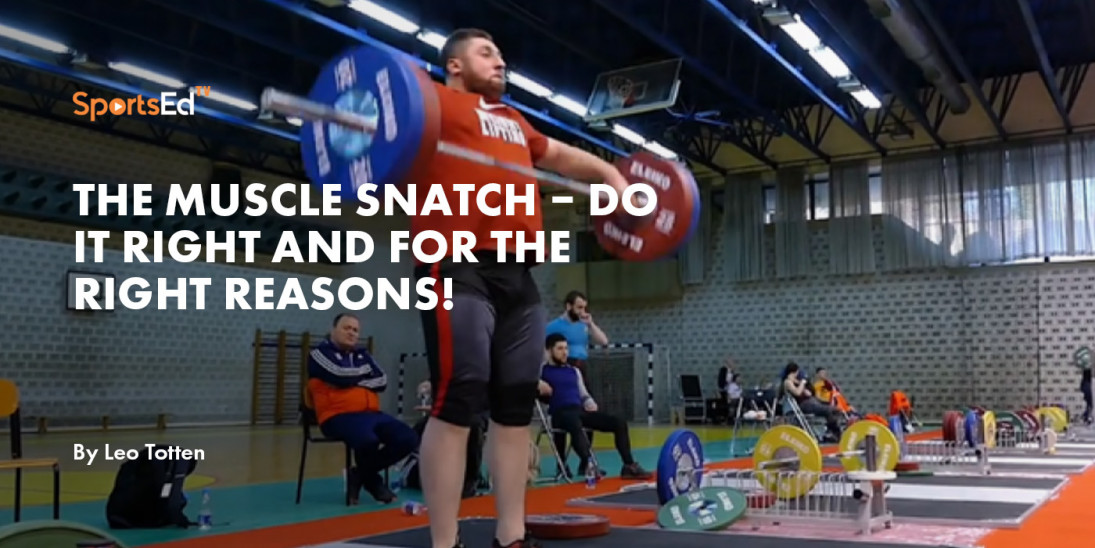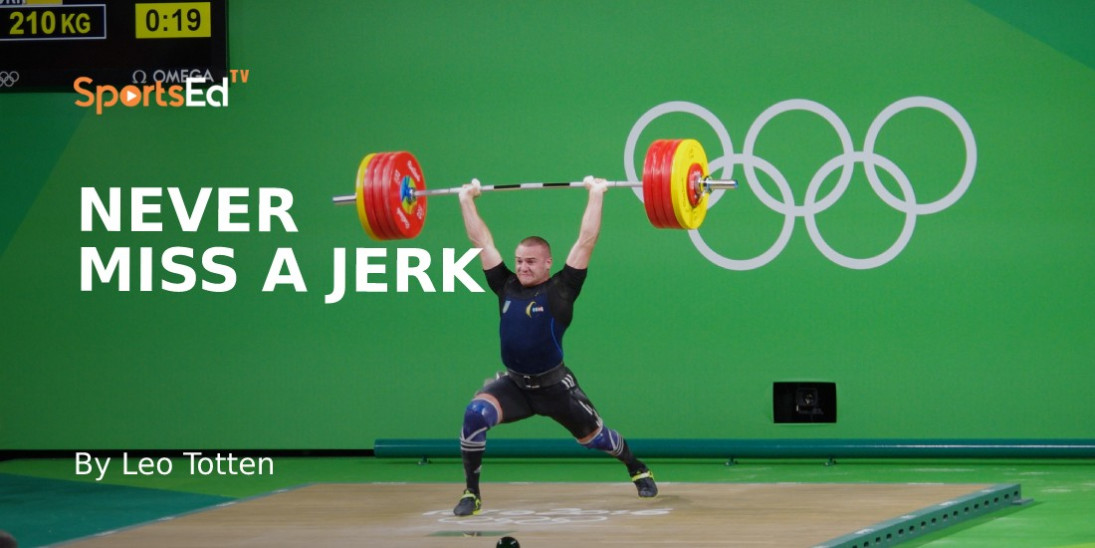Weightlifting
Welcome and thanks for visiting...

The Muscle Snatch – Do It Right and For the Right Reasons!

We always start with the “WHY”. Why do you do a particular exercise? What is the issue you are trying to resolve? If the issue is swinging the bar away from the body at the top of the snatch, well, then, guess what, Muscle Snatches just might be the answer.
When performing the regular Snatch movement, the legs go through the triple extension (hips, knees and ankles) in a very explosive manner, the “shrug” and the arms continue the movement upward but also with a very quick pressing of the body under the bar and finishing with a quick catch on bent knees. The goal is to keep the bar close to the body and have as little horizontal “loop” to the finish as possible. In order for this to happen on the turnover, the elbows have to lift vertically before the rapid turnover to finish.
If this is not happening like it should, the coach needs to determine WHY this is not happening and how to fix the problem.
If we try to keep in mind that solid Olympic lifting, whether we are talking about the snatch or the clean, is all about maximizing vertical force production. But what happens in many cases, the bar swings out at the top of the pull, causing horizontal movement. We stress keeping the bar close to the body, keeping the center of gravity of the bar as close to the center of gravity of the lifter’s body, therefore, producing the best vertical force production.
If the lifter has developed the pattern of swinging the bar out at the top of the pull, constant reminders of proper technique and review with lighter weights will help. This may take awhile because, as we all know, changing habits sometimes ain’t easy!
Sometimes the constant reminders of good positions just simply doesn’t work because the lifter may have a lack of flexibility to be able to get the elbows up at the top of the pull. Many athletes have done a lot of bench presses in their past so they tend to be overdeveloped in the upper pec and anterior deltoid area. So, instead of getting the elbows up at the top of the pull, the elbows stay in causing more of a “reverse curl” at the top. This swings the bar out causing horizontal movement and inconsistent bar path. Various stretching methods can be used to help with these issues. (That is the topic of another blog!)
A good coach will be able to identify the “cause” of the issue, and the Muscle Snatch could be incorporated into the training sessions as a remedy.
Check out the video of how the Muscle Snatch is performed properly:
For this exercise, the idea isn’t how much weight, but how correctly the movement is done. Is it accomplishing the goal of keeping the bar close and finishing with a strong pressing movement? Keeping the head and shoulders “neutral”, the bar should literally pass right in front of the face.
There have been posts on the internet of lifters hitting PRs in the Muscle Snatch but when you see how the lift is performed, you have to wonder, is it really helping or is it actually reinforcing bad habits? Don’t worry about how much weight you are using until you have the technique of the exercise down pat. Create that new correct pattern and then add weight to get stronger in those positions.
As the video shows, the Muscle Snatch can be performed from any of the start positions as long as the technique throughout stays consistent. Typically, only 3-4 sets of 5 reps is recommended at a light to moderate load. The exercise can be inserted into the program as one of the assistance exercises for the Snatch or even as a nice warmup before the regular Snatch workout.
Muscle Snatch is a great tool in your toolbox! If you need it – do it!!





